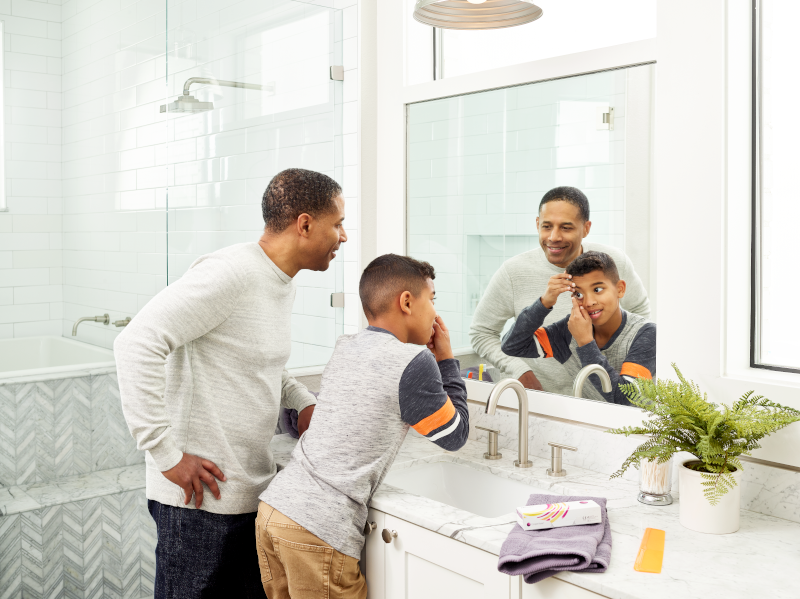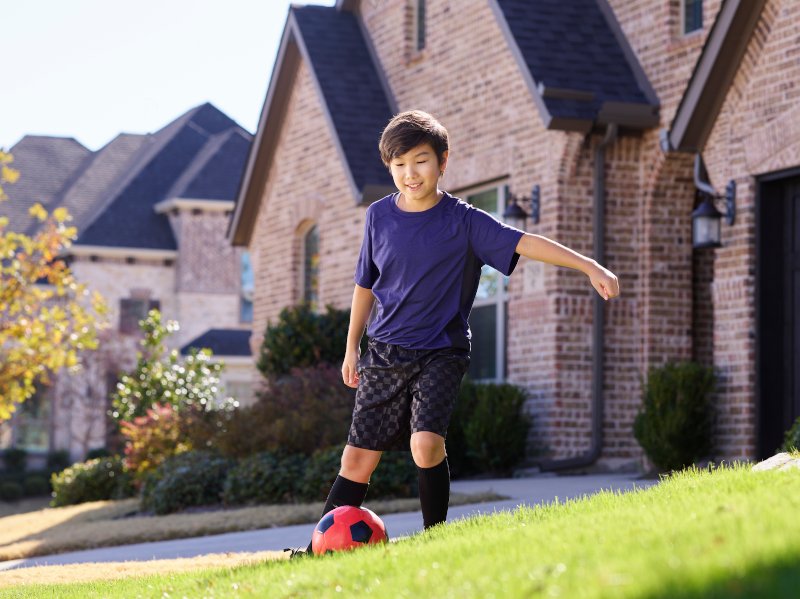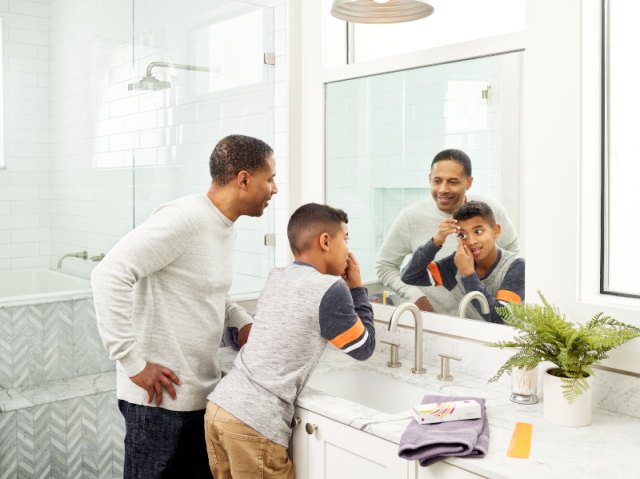With the new school year in full swing, now is the time to take your child to the eye doctor for an annual comprehensive eye exam. There’s nothing worse than your child not being able to learn from the classroom whiteboard or enjoy sports activities because they can’t see clearly. Odds are, your child’s routine has changed quite a bit over the past year. You may have found your family spending more time on digital devices and reading along with less time outdoors.
Studies have found that lifestyle factors such as these may have an impact on the development of myopia, whose primary symptom is blurry distance vision.¹⁻³ In addition, children often don’t know their eyesight isn’t 20/20 because it’s all that they know, so it’s up to you to take your child to the eye doctor to find out.
What is Myopia?
Myopia is a very common eye condition. On average, 42% of children age 5 to 19 have myopia.⁵ Your family history also plays a role in whether your child will develop myopia; the odds of a child developing this eye condition is increased by three times with one parent having myopia, and the odds of a child developing myopia is six times as likely if both parents have myopia. 6,7

What are the treatments for myopia?
When children are diagnosed with myopia, glasses are a common next step. While glasses will help a child with myopia see the whiteboard more clearly, they’re not able to impact the long-term progression of their myopia. As myopia worsens, the child’s glasses prescription will get higher. If left untreated, myopia can lead to sight-threatening conditions later in life, including retinal detachment, myopic maculopathy, glaucoma, and cataracts.⁸ Fortunately, now there is FDA-approved* MiSight® 1 day myopia control soft contact lenses to slow the progression of myopia in children, aged 8-12 at the initiation of treatment.†4 Read on to see how MiSight® 1 day soft contact lenses work, and if this product may be a fit for your age-appropriate child!

How Does MiSight® 1 day Work?
MiSight® 1 day soft contact lenses feature ActivControl® Technology which utilizes an innovative concentric ring design to correct blurred distance vision while slowing the elongation of the eyeball. Children should wear the lenses for a minimum of 10 hours a day, 6 days a week for best results and should continue using the contact lenses until their eyes stop growing and the prescription stabilizes as directed by their eye care professional.⁴
You’re probably wondering whether contact lenses are right for your child. Your eye doctor will show you and your child how to care for the lenses and insert and remove them safely. Though you may not think your child will be able to use contact lenses, we can assure you that children learn how to insert contact lenses fairly quickly, with 85 percent of them finding it easy to insert after just one month!⁹

Hear Addy’s Story
Addy, an eight and a half year old who was diagnosed with myopia when she was in kindergarten, began controlling her myopia using MiSight® 1 day soft contact lenses. Addy’s mom has myopia, and Addy’s myopia had progressed quickly. Putting in the contact lenses took her a little while to learn, but with a little practice, she got the hang of it and now wears her contacts almost every day to slow her myopia.⁴
“It was such an easy option,” says Addy’s mom, “and the contacts give her more freedom so she doesn’t have to deal with glasses. I love everything about it!”
Learn more about MiSight® 1 day soft contact lenses by speaking to a certified Brilliant Futures™ eye care professional in your area. Click here to find a doctor.











